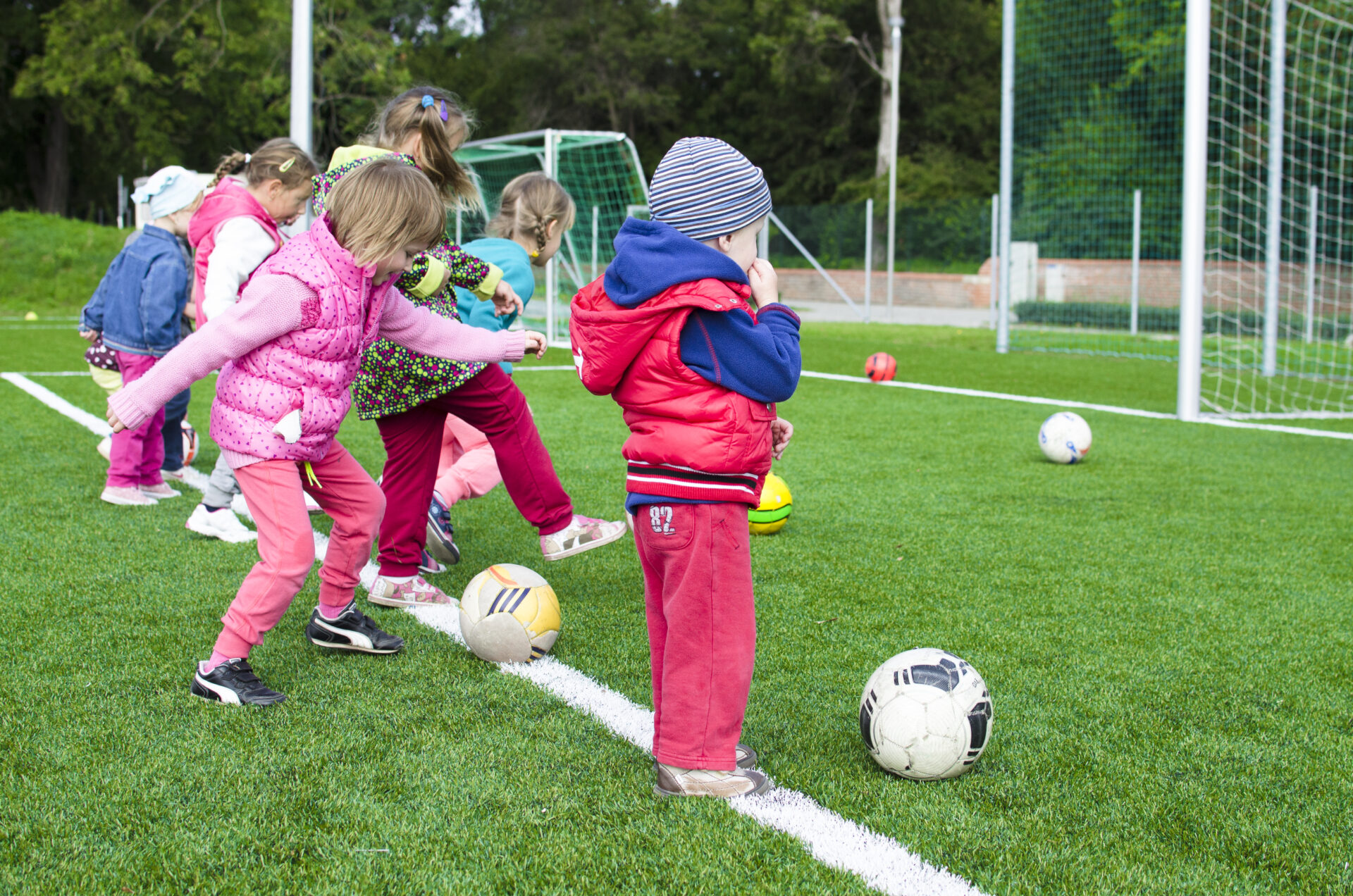Traditional ball games have been an integral part of human culture for centuries, showcasing unique customs and skills specific to each region. These games are not merely recreational activities; they serve as a medium to preserve cultural heritage and foster a sense of community among participants. One such example is Sepak Takraw, a traditional Southeast Asian game that combines elements of volleyball and soccer. The game requires players to use their feet, knees, chest, and head to keep a rattan ball from touching the ground. The skill and agility demonstrated in Sepak Takraw highlight the rich cultural history of Southeast Asia and the importance of preserving traditional ball games.
Preserving traditional ball games has significant impacts on both cultural and social aspects. These games serve as a manifestation of cultural identity, reflecting the traditions, beliefs, and values of a particular community. Through the practice and promotion of traditional ball games, communities can uphold their unique heritage and pass it down to future generations. Additionally, these games provide a platform for social interaction and bonding among individuals. By participating in traditional ball games, people forge connections with others who share a common interest, strengthening community ties and fostering a sense of belonging.
In the forthcoming sections of this article, we will delve deeper into the key takeaways of preserving traditional ball games. We will explore the educational benefits these games offer, including the development of physical skills, mental agility, and strategic thinking. Furthermore, we will discuss the role of traditional ball games in promoting cultural diversity and tourism, as well as the challenges they face in the modern era. Join us as we unravel the fascinating world of traditional ball games and discover why their preservation is imperative for our collective heritage.
Key Takeaways
1. Traditional ball games are an important part of cultural heritage, connecting communities and promoting physical activity.
2. Rapid urbanization and modernization pose significant threats to the preservation of traditional ball games.
3. Efforts are being made globally to safeguard traditional ball games through documentation, research, and the establishment of museums and festivals.
4. Educational programs and awareness campaigns play a crucial role in transmitting traditional ball game knowledge to younger generations.
5. Collaboration between local communities, government agencies, and international organizations is essential to ensure the long-term survival of traditional ball games.
How Can Traditional Ball Games Be Preserved for Future Generations?
Introduction
The Significance of Traditional Ball Games
Traditional ball games hold a special place in our cultural heritage, fostering unity, physical fitness, and social interaction. They are a window into our past, representing centuries-old traditions that need to be preserved for future generations. However, with the rise of modern sports and digital entertainment, the popularity of traditional ball games has dwindled. This article explores various ways to ensure the preservation and revival of these invaluable cultural treasures.
1. Documenting and Archiving
Traditional ball games are often passed down orally from one generation to the next. To preserve them, it is crucial to document and archive their rules, techniques, and history. Creating a comprehensive database of traditional ball games will not only ensure their preservation but also enable future research, facilitate learning, and contribute to cultural diversity.
2. Engaging in Cultural Exchanges
Cultural exchanges play a pivotal role in preserving traditional ball games. Encouraging intercultural events and collaborations brings diverse communities together to share their unique sporting traditions. This promotes tolerance, mutual understanding, and increases awareness of traditional ball games, ultimately leading to their preservation and wider recognition.
3. Education and Awareness Campaigns
Preservation starts with education. Schools and educational institutions should include traditional ball games in their curricula to teach students about their historical, cultural, and social significance. Furthermore, awareness campaigns in mainstream media and social platforms can help ignite interest and appreciation for these games among the general public.
4. Organizing Tournaments and Festivals
To keep traditional ball games alive, organizing regular tournaments and festivals dedicated to these sports is crucial. This not only provides a platform for players to showcase their skills but also attracts spectators and media attention. By creating an atmosphere of excitement and celebration, these events contribute to the overall popularity and preservation of traditional ball games.
5. Community Involvement and Support
Preserving traditional ball games requires active community involvement and support. Local organizations, clubs, and associations should take the initiative to provide infrastructure, training facilities, and financial assistance to players and teams. Developing sustainable programs that encourage the participation and engagement of all age groups will ensure the continuity and vitality of traditional ball games.
6. Adapting to the Modern Era
While preserving tradition, it is essential to adapt traditional ball games to suit the modern era. Embracing technological advancements can help promote and popularize these games among younger audiences. Online platforms, virtual tournaments, and interactive apps can provide an immersive experience while retaining the essence and authenticity of traditional ball games.
7. International Recognition and Protection
Seeking international recognition and protection for traditional ball games is crucial for their long-term preservation. Collaborating with international sports organizations, UNESCO, and other cultural entities can help safeguard these games from extinction. Inclusion in world heritage lists and declarations can provide the necessary support, resources, and legal frameworks to ensure their perpetuation.
8. Encouraging Intergenerational Bonding
Preserving traditional ball games should focus on fostering intergenerational bonds. Encouraging the involvement of older generations in training, coaching, and transmitting knowledge to younger players ensures the continuity of these games. By bridging the generation gap through shared experiences, traditional ball games can thrive well into the future.
Conclusion
Preserving traditional ball games is essential to maintain our cultural identity, promote physical activity, and celebrate our diverse sporting heritage. By documenting, educating, organizing events, and involving communities, we can secure the future of these games for generations to come.
Guides and Tips for Preserving Traditional Ball Games
1. How can traditional ball games be archived and documented effectively?
2. What strategies can be employed to encourage cultural exchanges and collaborations?
3. How can educational institutions incorporate traditional ball games in their curricula?
4. What steps should be taken to organize successful tournaments and festivals?
5. How can local communities provide sustainable support and infrastructure for traditional ball games?
6. What innovative approaches can be used to adapt traditional ball games to the modern era?
7. How can international recognition and protection be sought for traditional ball games?
8. What initiatives can be implemented to promote intergenerational bonding through traditional ball games?
Frequently Asked Questions (FAQ) about Preserving Traditional Ball Games
1. Why is it important to preserve traditional ball games?
Preserving traditional ball games is crucial because they are an essential part of cultural heritage. These games carry historical and social values, connecting generations and fostering a sense of identity and community. By preserving them, we ensure that future generations can also experience and appreciate these unique traditions.
2. How can traditional ball games be preserved?
Preserving traditional ball games can be achieved through various means. It includes documenting the rules, techniques, and history of the games, organizing events and tournaments to keep them alive, promoting education about the games in schools and communities, and encouraging active participation from both younger and older generations.
3. Do traditional ball games have any health benefits?
Absolutely! Traditional ball games promote physical activity, which contributes to overall fitness and well-being. These games often involve running, jumping, throwing, and coordination, which can enhance cardiovascular health, muscular strength, and flexibility. Additionally, they provide opportunities for socializing and teamwork, fostering mental and emotional well-being.
4. Are traditional ball games only popular in specific regions or countries?
While some traditional ball games may have originated in specific regions or countries, many of them have spread across various cultures and continents. Traditional ball games have evolved and adapted over time, transcending boundaries and gaining popularity internationally. They have become a shared heritage valued and celebrated by people worldwide.
5. How can the younger generation be encouraged to participate in traditional ball games?
Encouraging the younger generation to participate in traditional ball games requires creating awareness and making them accessible and appealing. Organizing workshops, demonstrations, and school programs can introduce children to these games, showcasing their unique aspects and historical significance. Additionally, integrating traditional ball games into modern recreational facilities and activities can attract the interest and involvement of the youth.
6. Can playing traditional ball games have an educational impact?
Absolutely! Traditional ball games carry cultural, historical, and societal significance. By playing these games, individuals can gain a deeper understanding of their heritage, traditions, and values. Traditional ball games often have rules and strategies that require critical thinking and problem-solving skills, enhancing cognitive abilities. Playing these games can also teach important life lessons such as teamwork, resilience, and discipline.
7. Are there any organizations dedicated to preserving traditional ball games?
Yes, there are numerous organizations and associations worldwide that focus on preserving traditional ball games. These organizations work towards documenting, researching, and promoting these games, organizing events and competitions, and advocating for their recognition and preservation. Examples include the International Traditional Sports and Games Association (ITSGA) and various national associations dedicated to specific traditional ball games.
8. What are some examples of traditional ball games from different cultures?
Traditional ball games differ across cultures and regions. Some popular examples include Sepak Takraw from Southeast Asia, Bandy from Northern Europe, Ulama from Mesoamerica, Knattleikr from Iceland, and Tchoukball originating in Switzerland. Each of these games has its unique rules and characteristics, deeply rooted in their respective cultures.
9. Can traditional ball games be adapted to modern trends?
Absolutely! Traditional ball games have shown flexibility and adaptability throughout history. While preserving their core values and rules, these games can be adapted to modern trends and interests. This can involve incorporating technology, creating new variations, or blending traditional and modern elements to make the games more appealing and relevant to contemporary audiences.
10. How can individuals contribute to the preservation of traditional ball games?
Individuals can contribute to the preservation of traditional ball games in various ways. They can actively engage in playing these games, supporting local events and competitions, educating others about the importance of cultural heritage, and promoting the inclusion of traditional ball games in schools and communities. Additionally, individuals can volunteer or collaborate with organizations dedicated to preserving these games, offering their skills, time, or resources towards their continuity.
Final Thoughts on Preserving Traditional Ball Games
Preserving traditional ball games is not only about safeguarding the past; it is an investment in the future. These games carry invaluable cultural and historical significance, contributing to a sense of identity and belonging within communities. By embracing and promoting traditional ball games, we ensure that our shared heritage continues to thrive, providing countless benefits for generations to come. Let us join hands and cherish these traditions, preserving them as a testament to our rich and diverse cultural tapestry.




